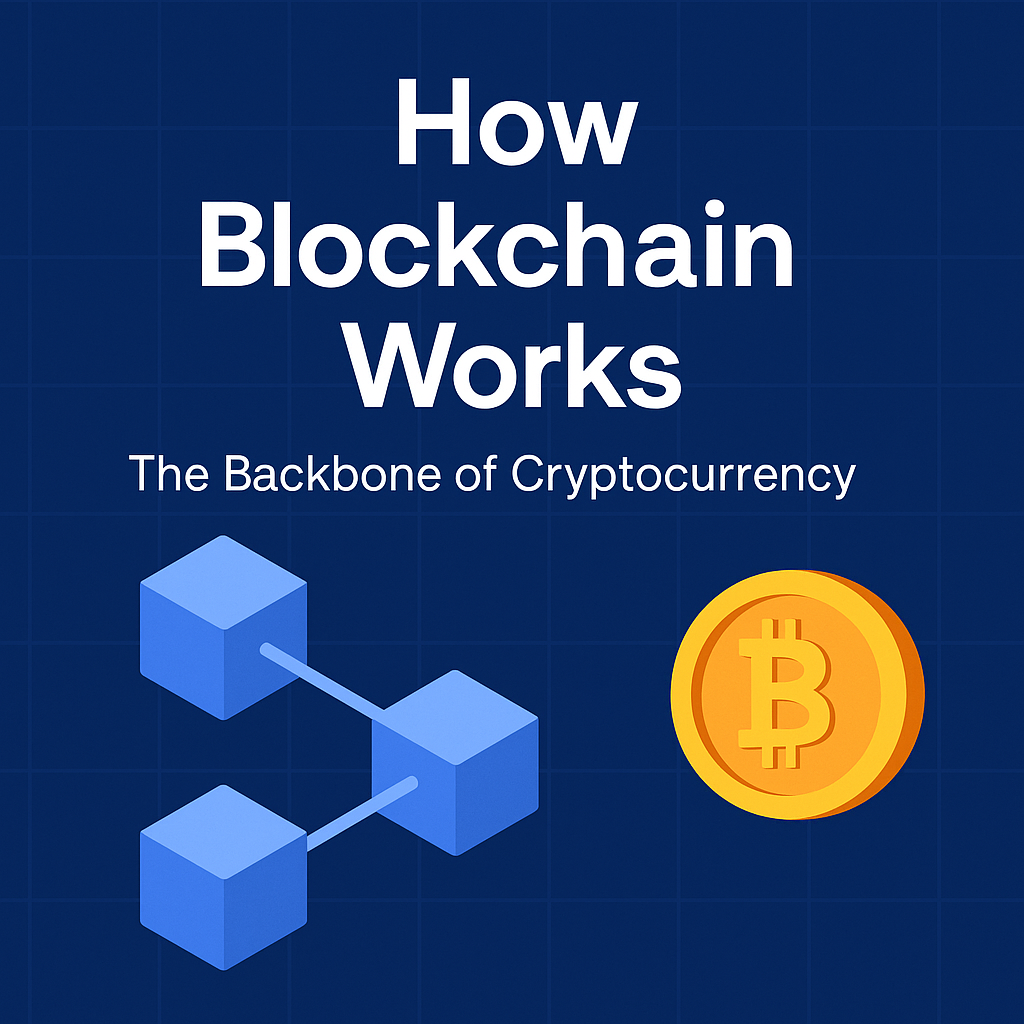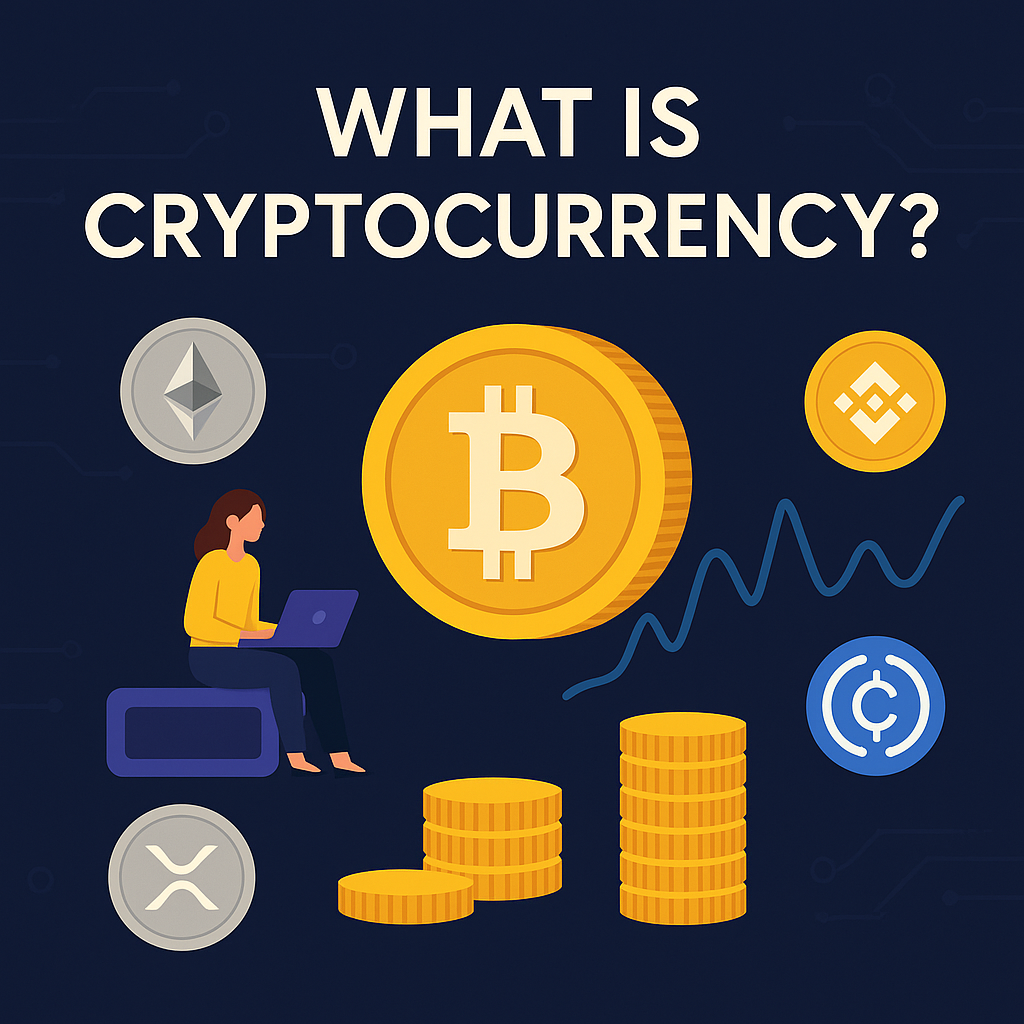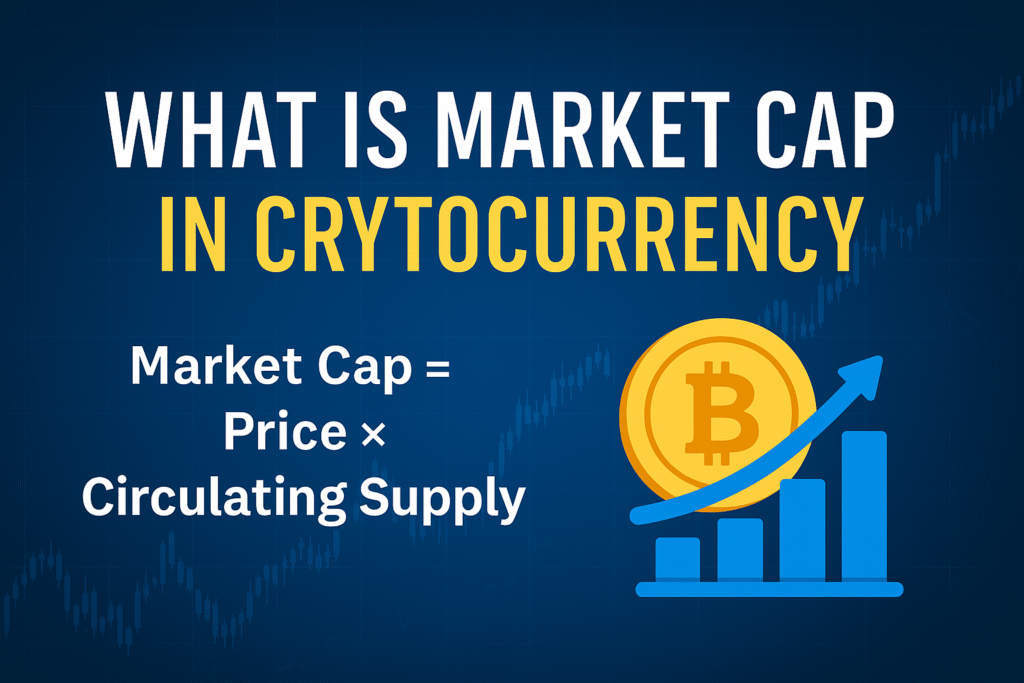
“If Bitcoin is the car, blockchain is the engine that makes it run.”
Cryptocurrencies like Bitcoin, Ethereum, and Solana have become household names — but the real innovation isn’t just digital currency. It’s the blockchain technology that powers them.
In this post, we’ll break down how blockchain works, why it’s so revolutionary, and how it’s transforming industries beyond crypto.
📌 Table of Contents
- What Is Blockchain?
- How Blockchain Works (Step-by-Step)
- Why Blockchain Is Secure
- Public vs. Private Blockchains
- Blockchain Use Cases (Beyond Crypto)
- Real-World Example: Bitcoin’s Blockchain
- Common Blockchain Terms (Explained Simply)
- Blockchain in India: Opportunities & Challenges
- Final Thoughts + Free Resources
1. 🧱 What Is Blockchain?
At its core, a blockchain is a digital ledger — like a Google Sheet — but:
- It’s decentralized
- Tamper-proof
- Accessible to all participants (on public blockchains)
Each entry in the blockchain is stored in a block, and once filled, it’s linked to the next block — forming a chain of blocks, hence the name blockchain.
2. ⚙️ How Blockchain Works (Step-by-Step)

Let’s break it down with an example of a Bitcoin transaction:
| Step | Description |
|---|---|
| 1️⃣ | You send 0.01 BTC to your friend |
| 2️⃣ | The transaction is broadcasted to the network |
| 3️⃣ | Nodes validate it using a consensus algorithm |
| 4️⃣ | Validated transaction is grouped with others in a block |
| 5️⃣ | The block is cryptographically sealed (mined) |
| 6️⃣ | The block is added to the existing chain |
| 7️⃣ | Transaction is complete and permanently recorded |
This entire process is done without any central authority. That’s the beauty of blockchain.
3. 🔒 Why Blockchain Is So Secure
Blockchain technology is trusted because of these three core pillars:
✅ Cryptography
Every block contains a unique hash (like a fingerprint). If even one transaction is altered, the entire block’s hash changes, exposing tampering instantly.
✅ Consensus Mechanism
A blockchain can’t be updated unless the majority of the network agrees. This is called consensus.
Popular methods:
- Proof of Work (PoW) – Used in Bitcoin (energy-intensive)
- Proof of Stake (PoS) – Used in Ethereum 2.0 (eco-friendly)
✅ Immutability
Once a block is added, it cannot be altered. This makes blockchain permanent, transparent, and tamper-proof.
💬 “Trust is no longer given, it’s programmed.” – Vitalik Buterin, Ethereum Co-Founder
4. 🌐 Public vs. Private Blockchains
| Feature | Public Blockchain | Private Blockchain |
|---|---|---|
| Access | Anyone can join | Only invited participants |
| Transparency | Fully transparent | Controlled transparency |
| Speed | Slower | Faster (fewer nodes) |
| Examples | Bitcoin, Ethereum | Hyperledger, Corda |
5. 🚀 Blockchain Use Cases (Beyond Crypto)
🏦 1. Banking & Finance
- Faster settlements
- Reduced fraud
- Lower transaction fees
🩺 2. Healthcare
- Secure patient data
- Drug authenticity tracking
🛒 3. Supply Chain
- Track goods from origin to shelf
- Transparency for ethical sourcing
📄 4. Digital Identity
- One ID for KYC, travel, banking, and voting
🎓 5. Education & Certificates
- Tamper-proof degrees and academic records
📊 Stat: According to Deloitte’s Global Blockchain Survey, 83% of companies see blockchain as a top strategic priority.
6. 🧪 Real-World Example: How Bitcoin’s Blockchain Works
Bitcoin’s blockchain is:
- Public and fully decentralized
- Validated through Proof of Work (mining)
- New block every 10 minutes
It has recorded over 800 million transactions securely without a single hack of the core protocol.
7. 🗂️ Common Blockchain Terms Explained
| Term | Meaning |
|---|---|
| Node | A computer in the blockchain network |
| Ledger | Digital record of transactions |
| Smart Contract | Self-executing code stored on blockchain |
| Fork | A split in the blockchain (due to disagreement) |
| DApp | Decentralized Application |
8. 🇮🇳 Blockchain in India: Opportunities & Challenges
✅ Opportunities:
- Digital Rupee (CBDC) by RBI is blockchain-based
- States like Maharashtra use blockchain in land records
- India’s growing tech talent favors adoption
⚠️ Challenges:
- Unclear regulations (govt cautious due to crypto scams)
- Lack of awareness in rural sectors
- Scalability concerns for large-scale deployment
📰 News: NITI Aayog’s report “Blockchain: The India Strategy” outlines how blockchain can reduce corruption and improve governance.
📖 Read here: NITI Aayog Blockchain Report
🧠 Final Thoughts
Blockchain is the foundation of the future internet — and we’re still early.
It’s more than crypto. It’s about trust, decentralization, and efficiency in an increasingly digital world.
💬 Remember:
- You don’t need to be a coder to understand blockchain
- Start learning by reading, using wallets, and observing real projects
- Never fall for hype — understand the tech behind the trend
🔗 Further Learning (External Resources)
- Blockchain.com Explorer – View live Bitcoin blockchain
- Ethereum.org Learn Page – Developer docs and basic guides
- IBM Blockchain – Enterprise blockchain case studies
- CoinDesk – Blockchain 101 guide

